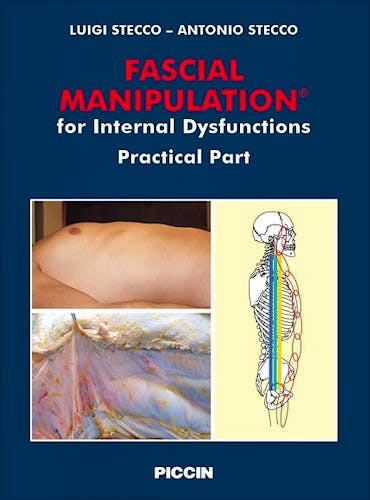

No hay productos en el carrito



Fascial Manipulation for Internal Dysfunctions. Practical Part
Stecco, L. — Stecco, A.
1ª Edición Julio 2016
Inglés
Tapa dura
320 pags
1060 gr
20 x 27 x 2 cm
ISBN 9788829927883
Editorial PICCIN
LIBRO IMPRESO
Oferta
-35%
106,00 €69,00 €IVA incluido
101,92 €66,35 €IVA no incluido
Producto en Liquidación
FASCIAL MANIPULATION FOR INTERNAL DYSFUNCTIONS - PRACTICAL PART
Description
The three images on the cover of this book summarise its fundamental concepts:
- the photograph of the anterior trunk wall depicts the ‘container’ of the organ-fascial units, apparatus-fascial sequences and internal systems
- the anatomical photograph of the parietal peritoneum highlights the texture of the internal fasciae and their adaptability to traction
- the illustration outlines the arrangement of the ante-medio catenary and of the three internalfascial sequences, namely the visceral, vascular and glandular fascial sequences.
This text presents the manual approach used in Fascial Manipulation for Internal Dysfunctions1(FMID) and, in particular, the modality for interacting with the autonomic nervous system.For example, in conventional medicine, an antacid is usually prescribed for gastroesophagealreflux, whereas FMID aims at restoring the motility of the cardia by acting on the thoracic wall orthe lumbar wall. If the fasciae of the ‘container’ are rigid then tension is transferred to the diaphragm, which inserts all around the rib margin. As the oesophagus passes through the diaphragm it also inserts onto the diaphragm itself by means of its fasciae. A network of intramural autonomic neurons that are sensitive to stretch regulates the peristalsis of the cardia. If the tension of the diaphragm and the tension of the oesophageal fasciae are notbalanced, then cardia peristalsis can be altered, causing changes in the timing of cardia closure.
© 2025 Axón Librería S.L.
2.149.0